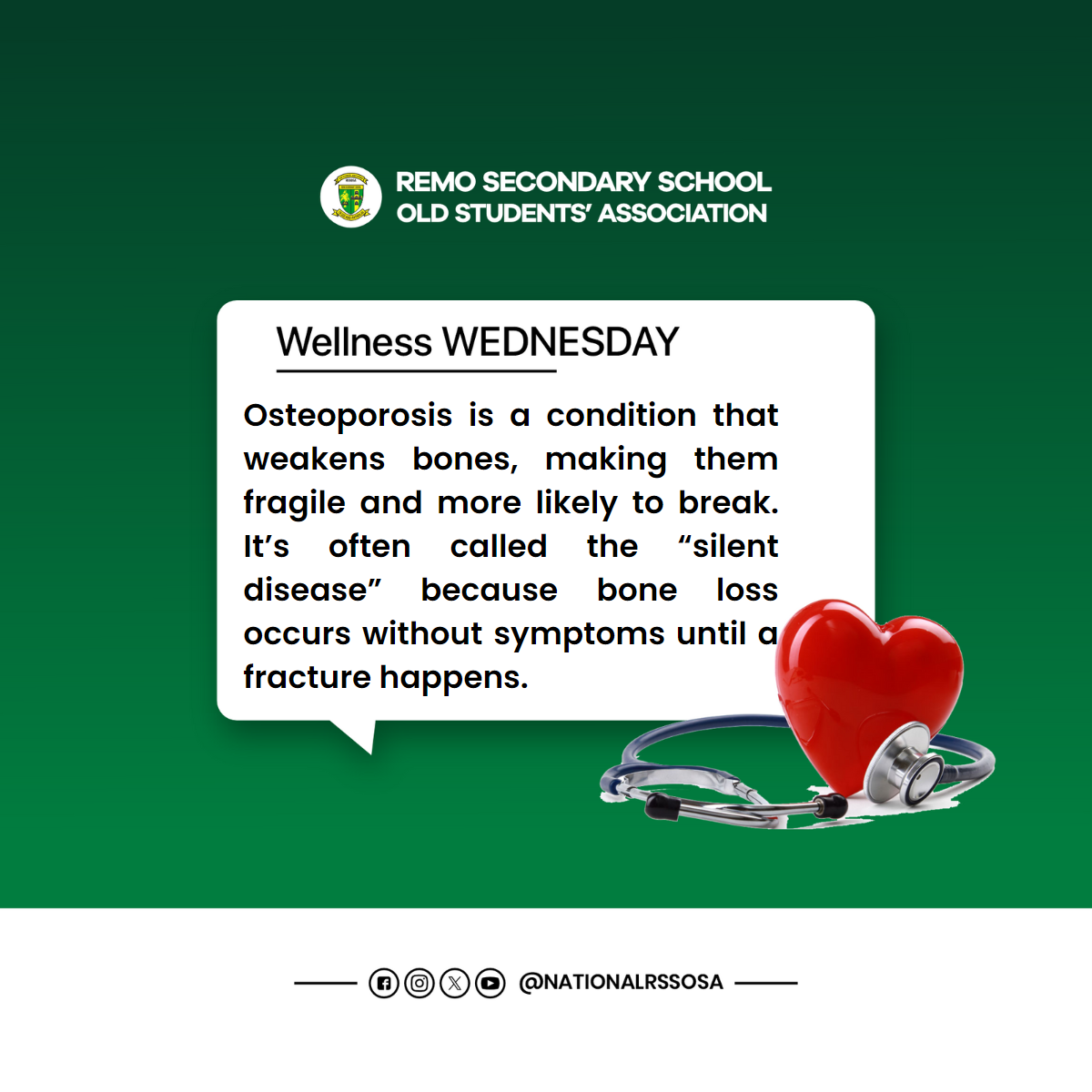
Learn how to prevent and manage osteoporosis with our Wellness Wednesday guide. Discover risk factors, prevention tips, and lifestyle changes to protect your bone health and reduce the risk of fractures. Stay informed and take charge of your well-being!
Osteoporosis occurs when the creation of new bone doesn’t keep up with the removal of old bone, leading to weakened bones. It’s most common in older adults, but bone health should be a priority at every age.
Risk Factors
1. Age and Gender: The risk increases with age and is more common in women, especially after menopause.
2. Family History: A family history of osteoporosis can increase your risk.
3. Lifestyle Factors: Lack of exercise, poor diet (especially low calcium and vitamin D intake), smoking, and excessive alcohol consumption can contribute to bone loss.
Prevention and Management Tips
1. Calcium and Vitamin D: Ensure your diet includes adequate calcium and vitamin D to support bone health. Dairy products, leafy greens, and fortified foods are good sources.
2. Weight-Bearing Exercise: Engage in regular weight-bearing exercises like walking, jogging, and strength training to help maintain bone density.
3. Avoid Smoking and Limit Alcohol: Smoking and excessive alcohol can weaken bones, so it's important to avoid or limit these habits.
4. Bone Density Tests: If you’re over 50 or have risk factors, talk to your healthcare provider about getting a bone density test.
Know the Symptoms
Osteoporosis often has no symptoms until a fracture occurs, but signs can include back pain, loss of height over time, and a stooped posture. Early detection is key to managing the condition.
Let’s take proactive steps today to protect our bones and reduce the risk of osteoporosis. Strong bones lead to a healthier, more active life.
Click on the link below to register your database and stand the chance to enjoy great membership benefits.
https://bit.ly/rssosamembershipdrive
#upschool
#uprss
#uprssosans
#WeAreGreat
#ForGodandFatherLand
#rssosa
#rssosamedia